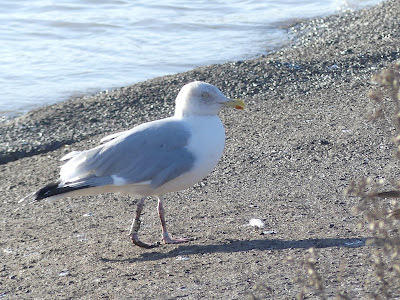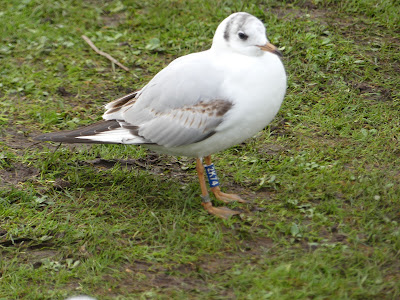A little spare time before collecting my car came up trumps when two birds were seen with colour rings, and read. The Turnstone had been ringed by Wash Wader Group, details still awaited and the other bird was a Herring Gull with a darvic. Chris read the rather battered ring through the 'scope and recorded the number as 4LA, black print on white and I took photographs to support our record.
Chris initially thought the bird to have been ringed on the Channel Islands but this was not the case. Form his investigation, it looked as though it was a bird marked after receiving care at the RSPCA but there seemed to be a digit short, worrying as the ring was breaking up. A check of all photographs revealed the correct code of a bird ringed in 2006 and released at Blackborough End tip, Norfolk when recovered.
This is the first time the bird has been sighted in 15 years.

































